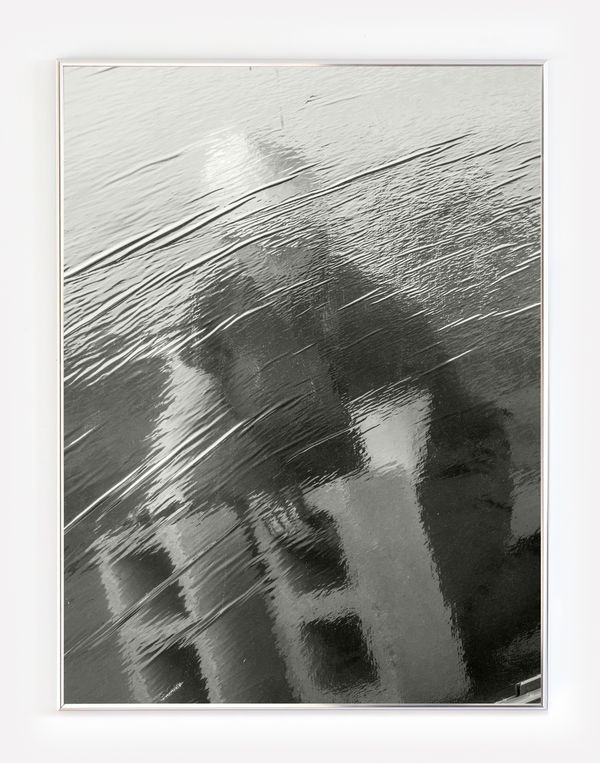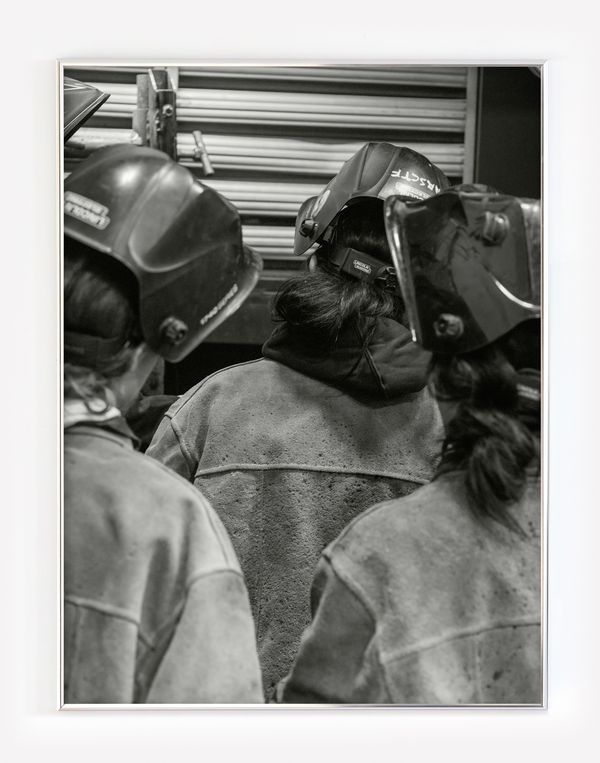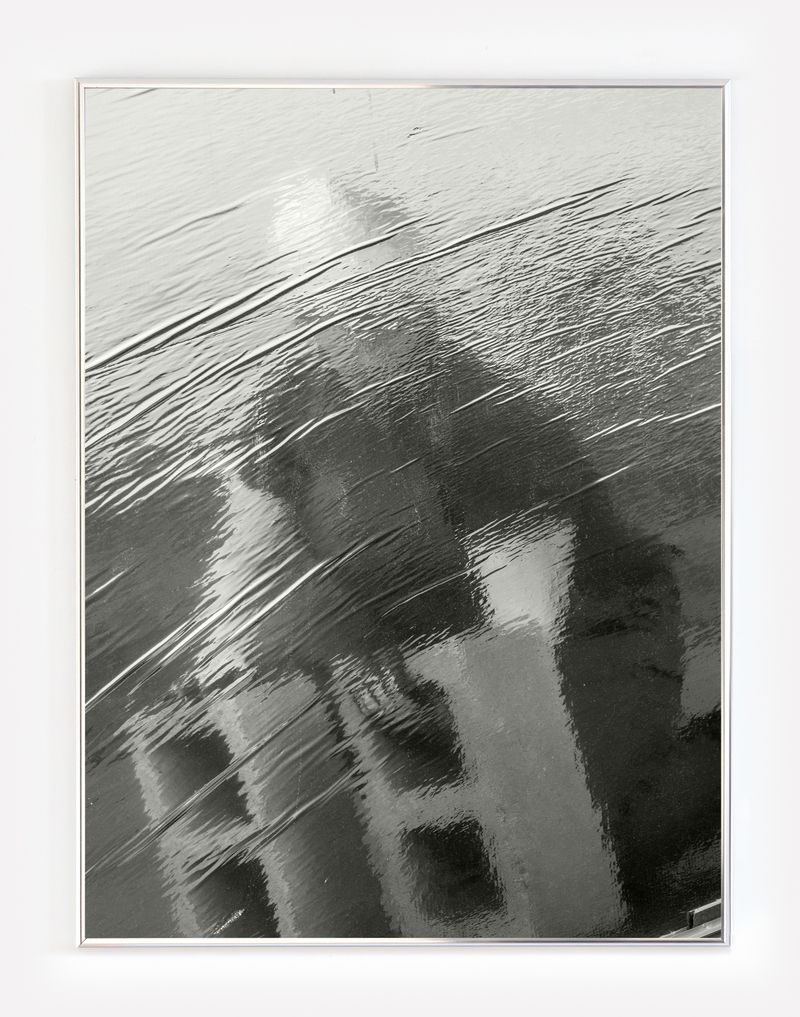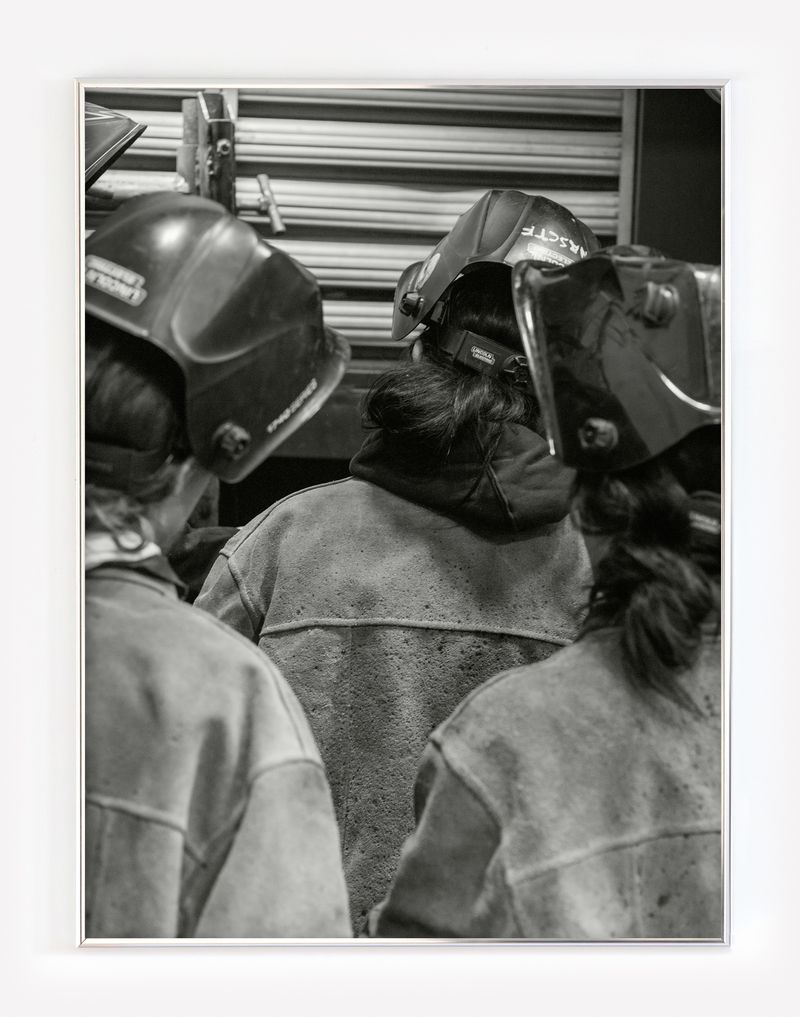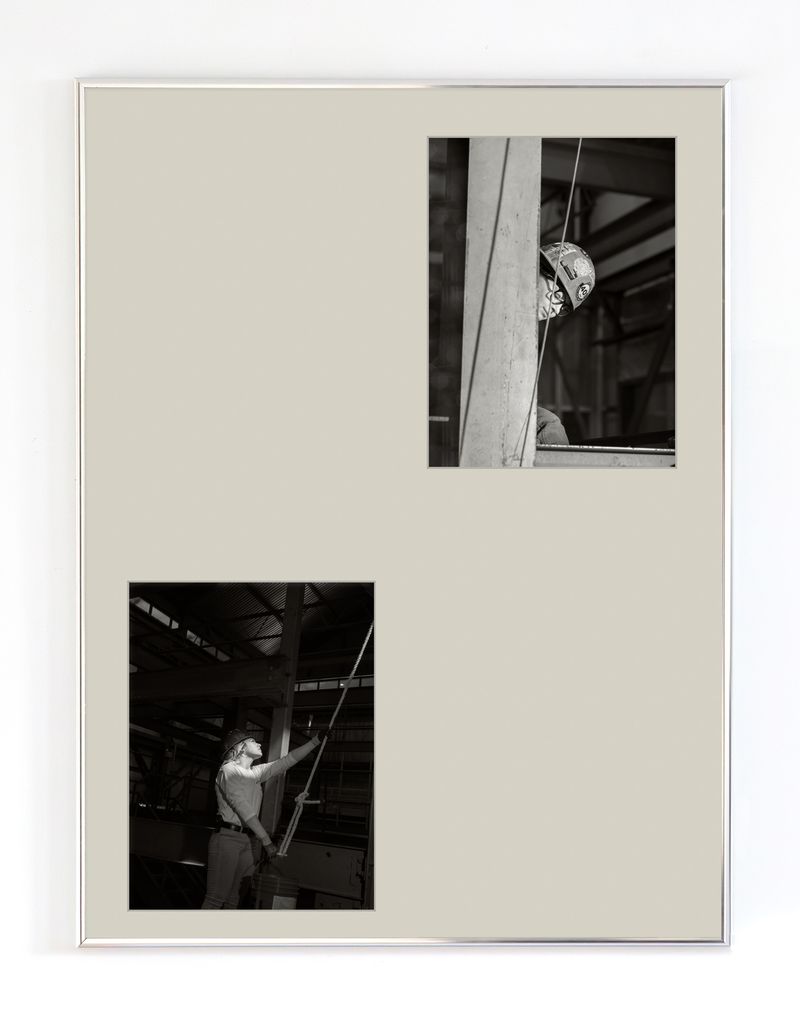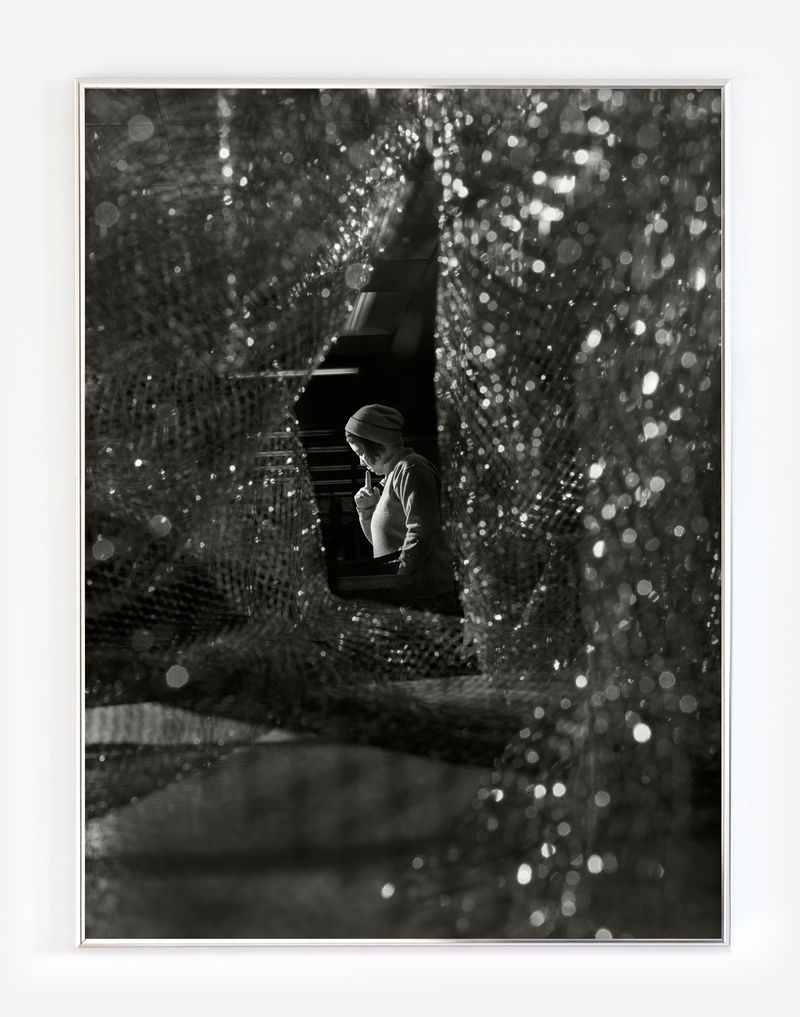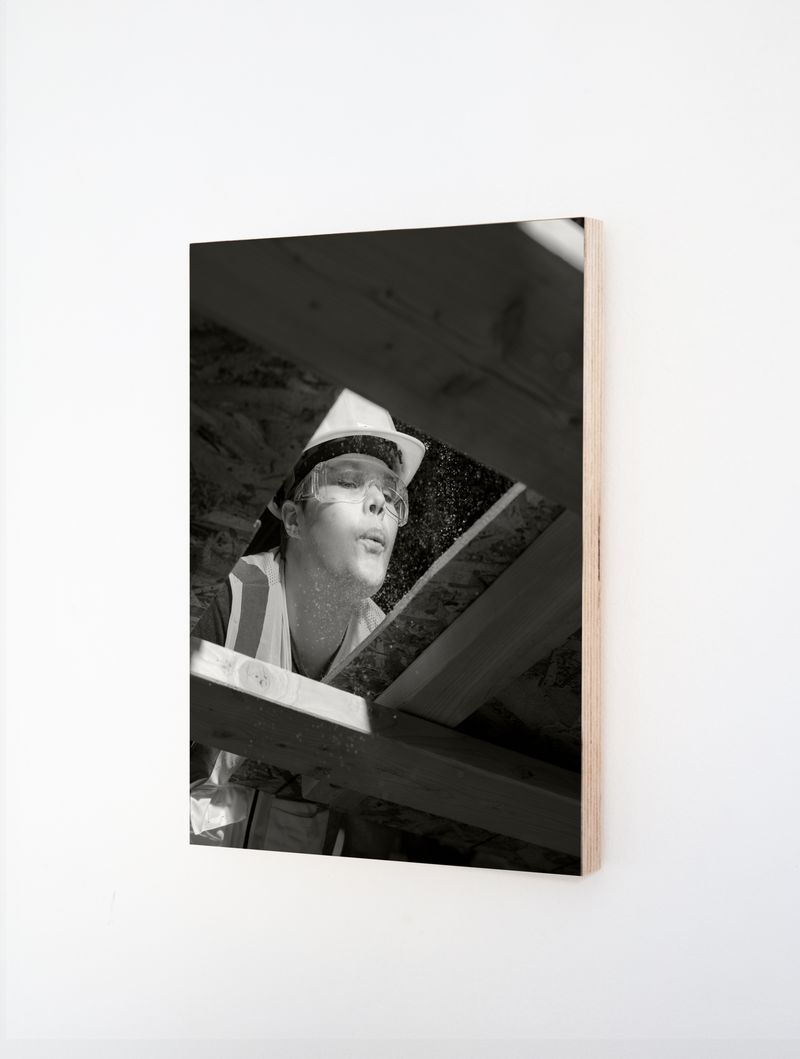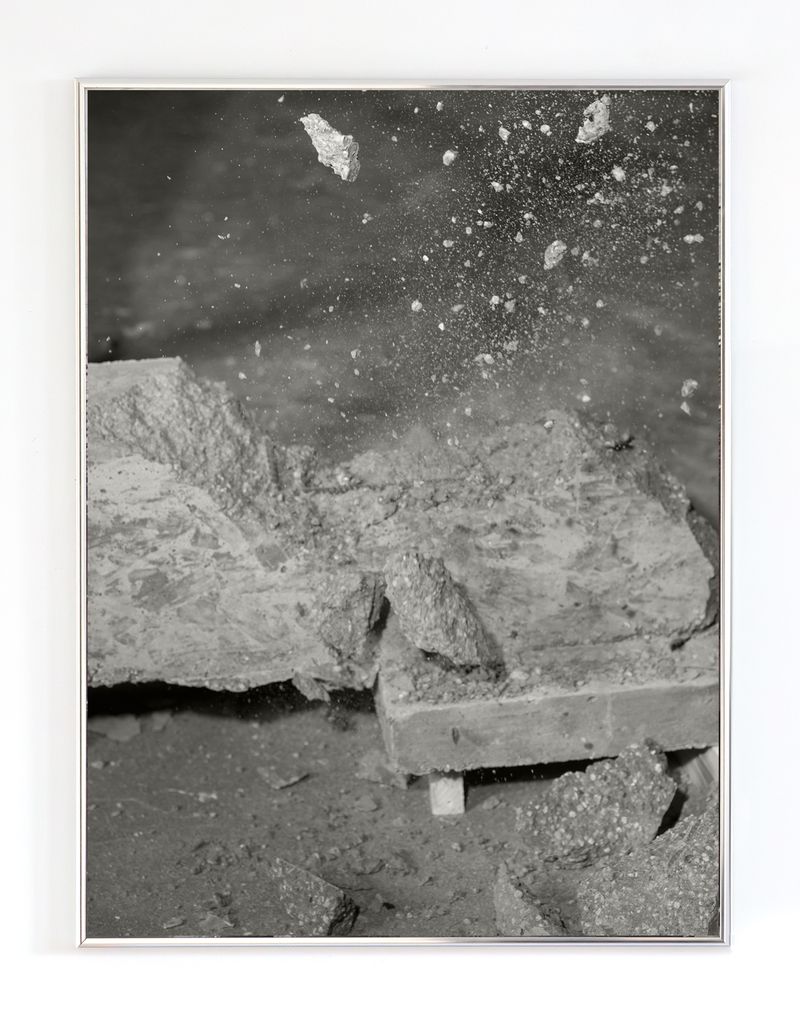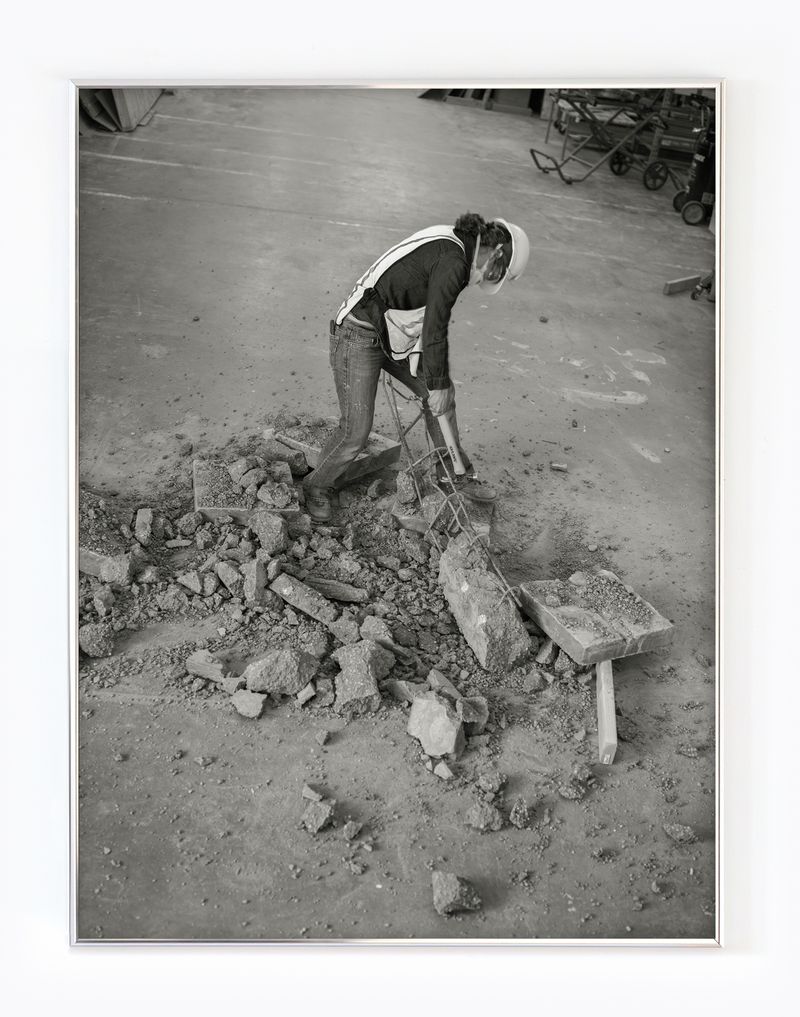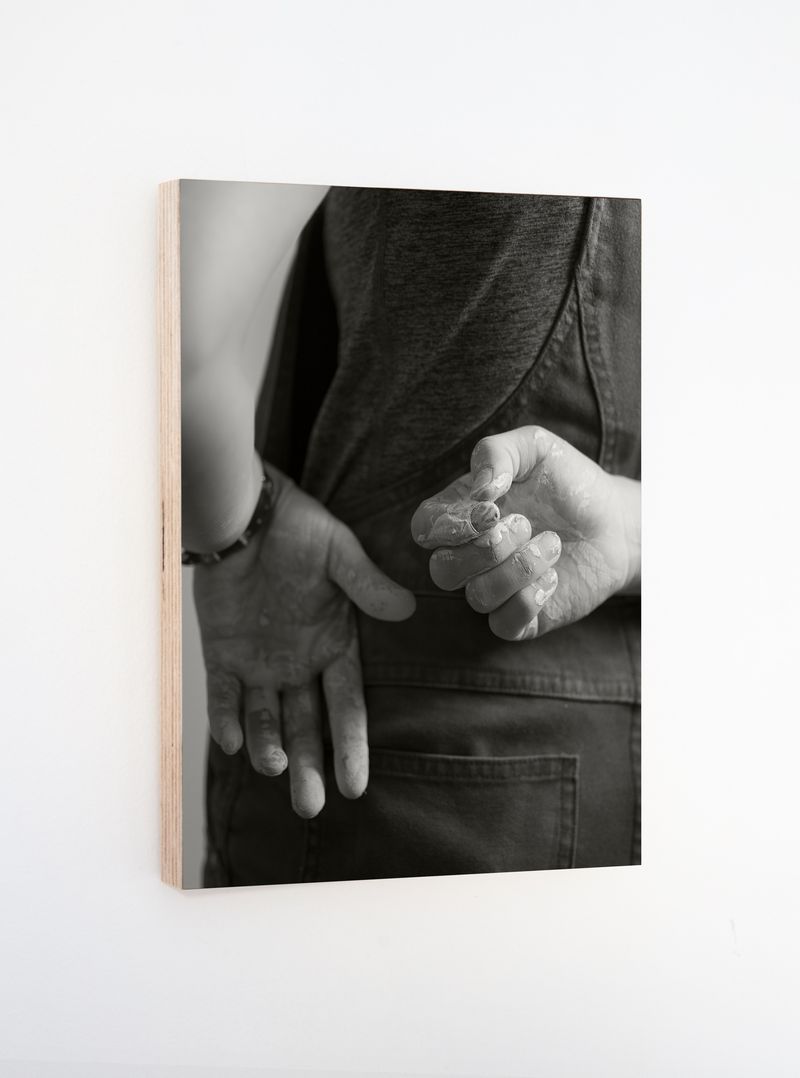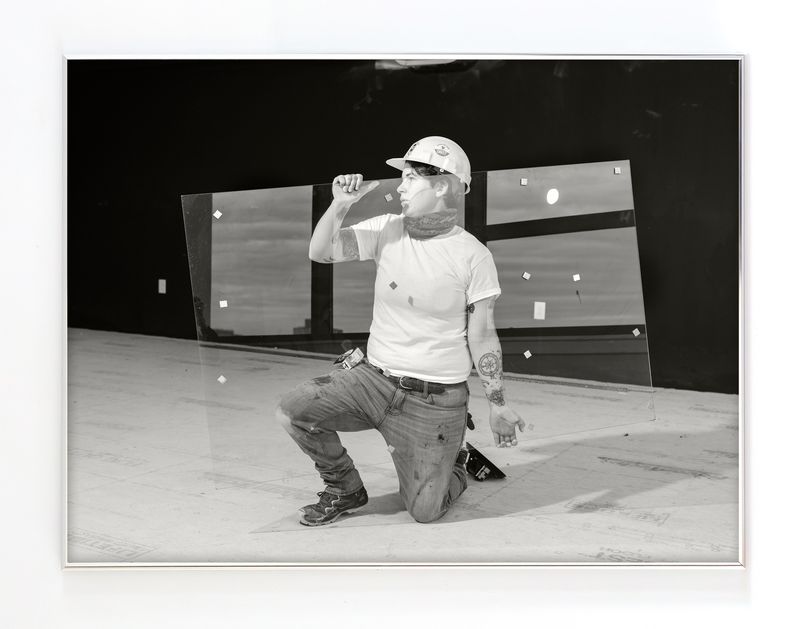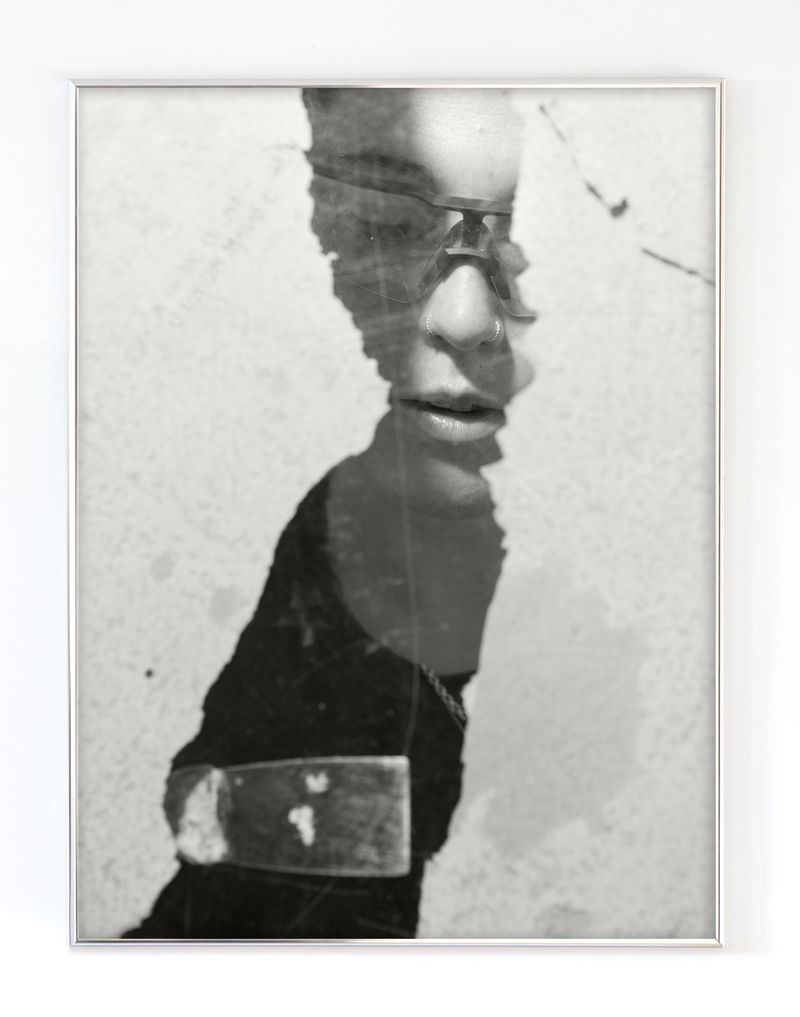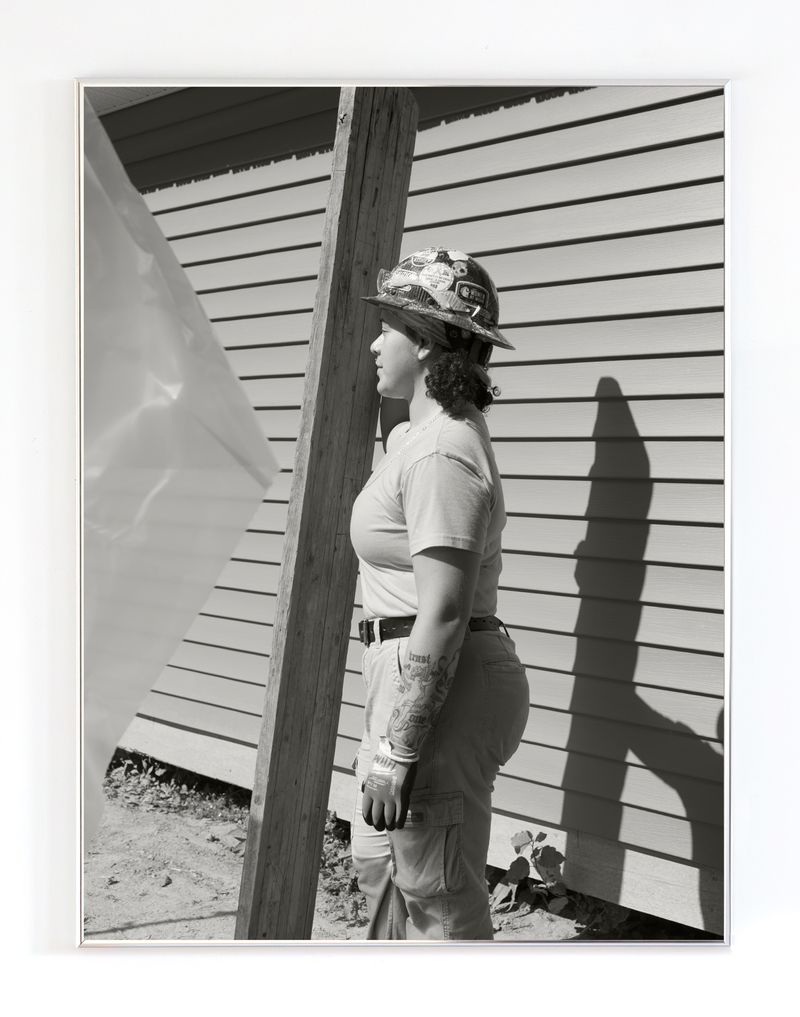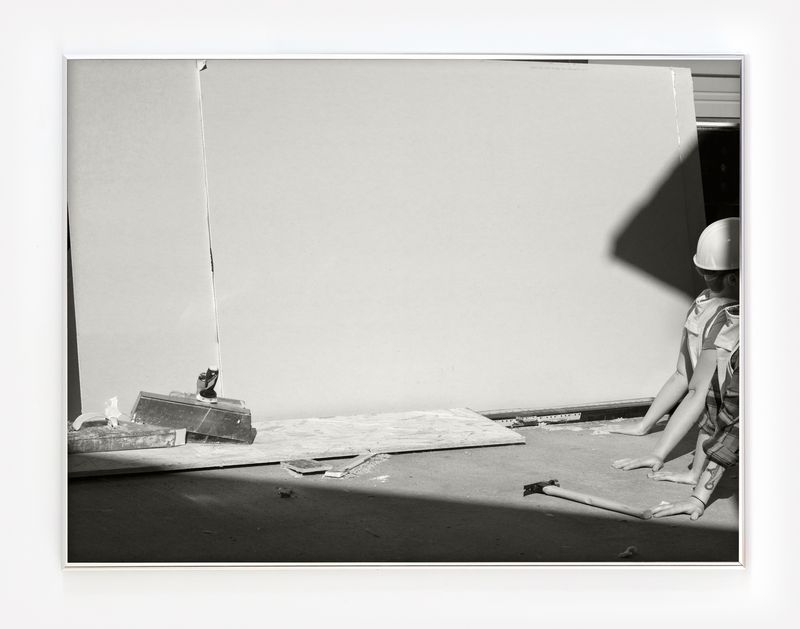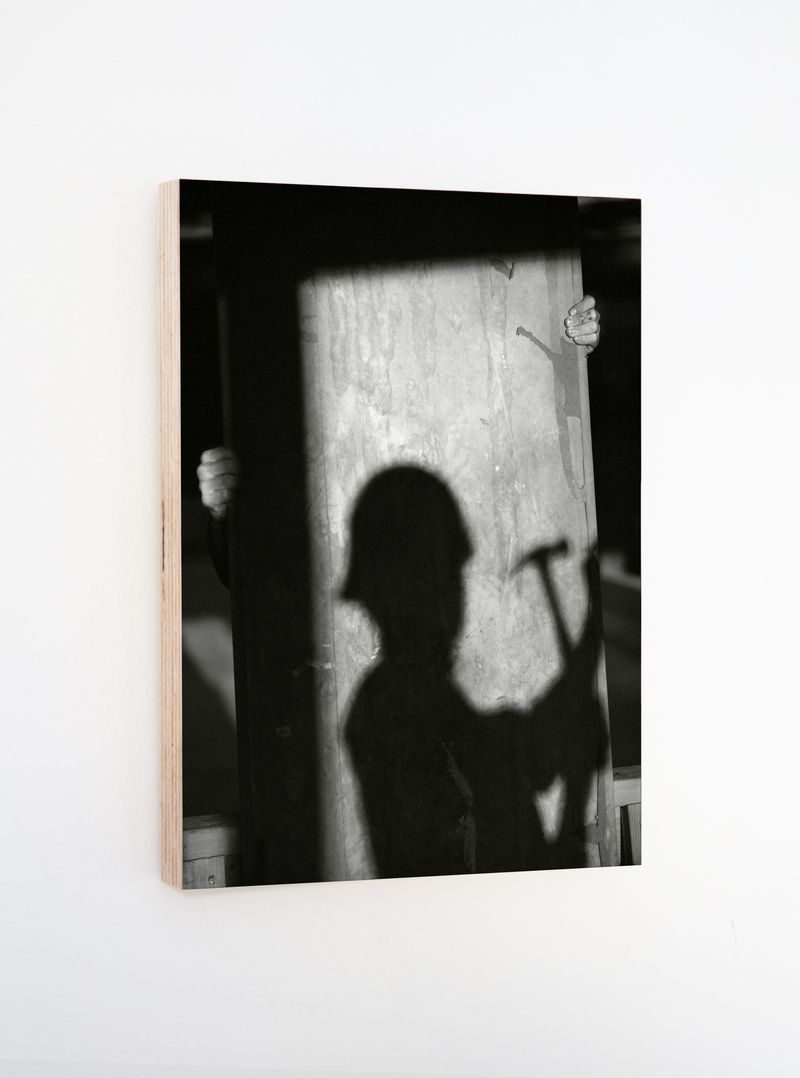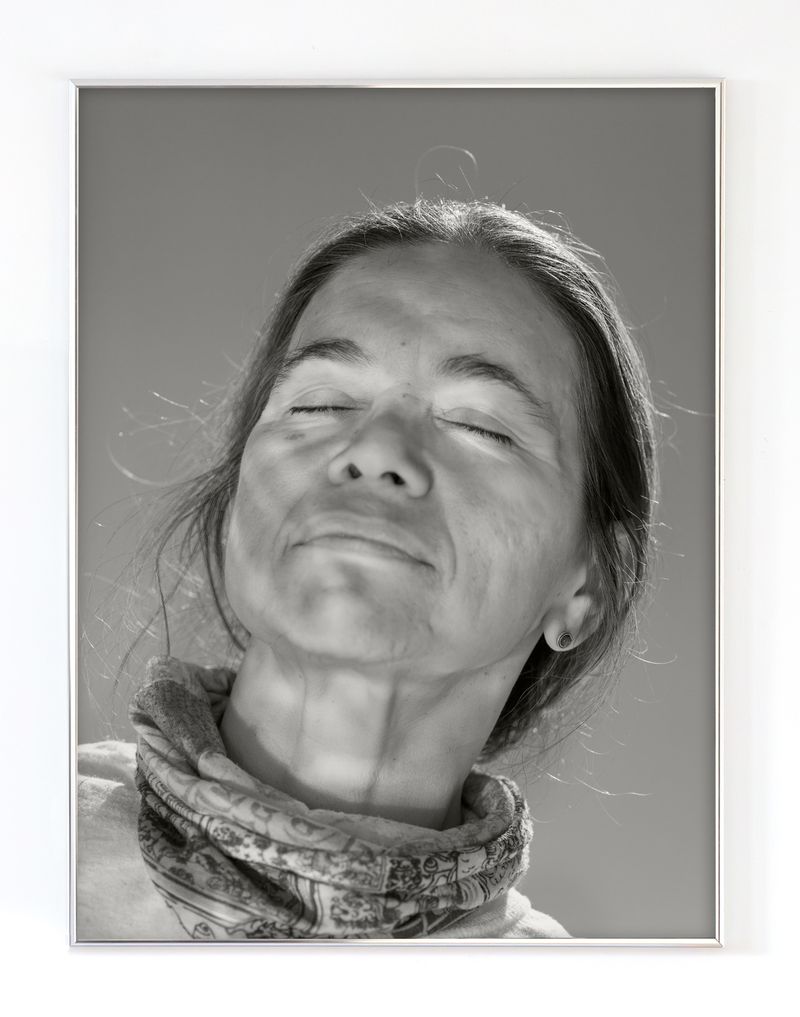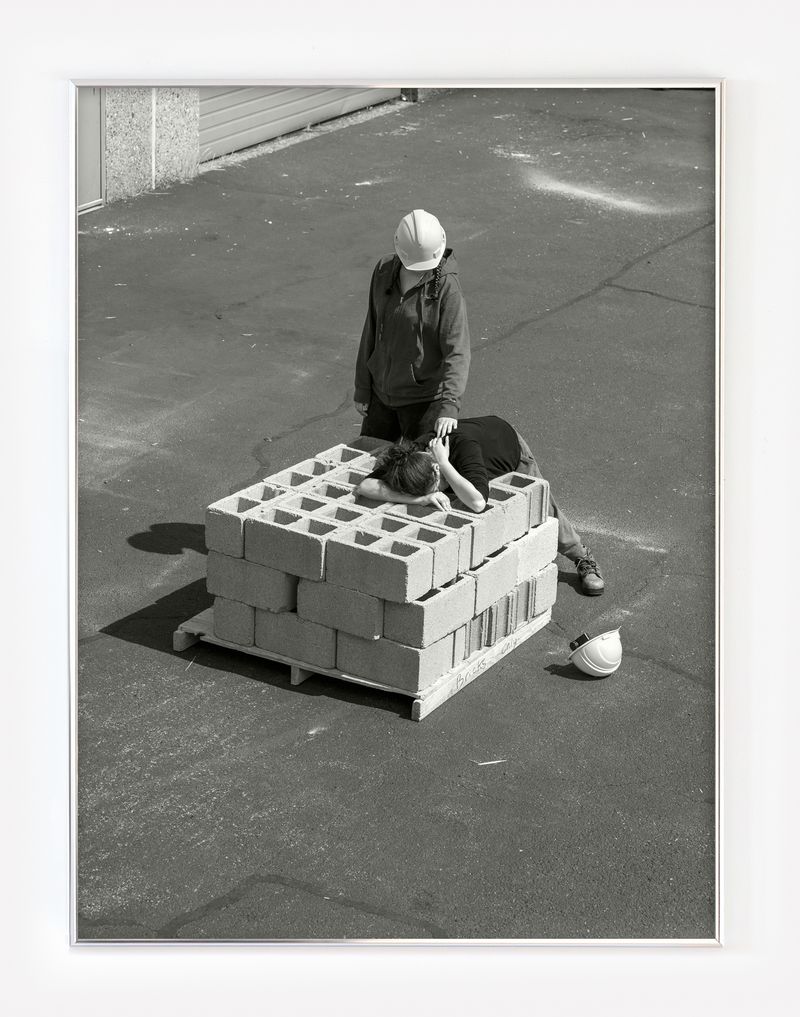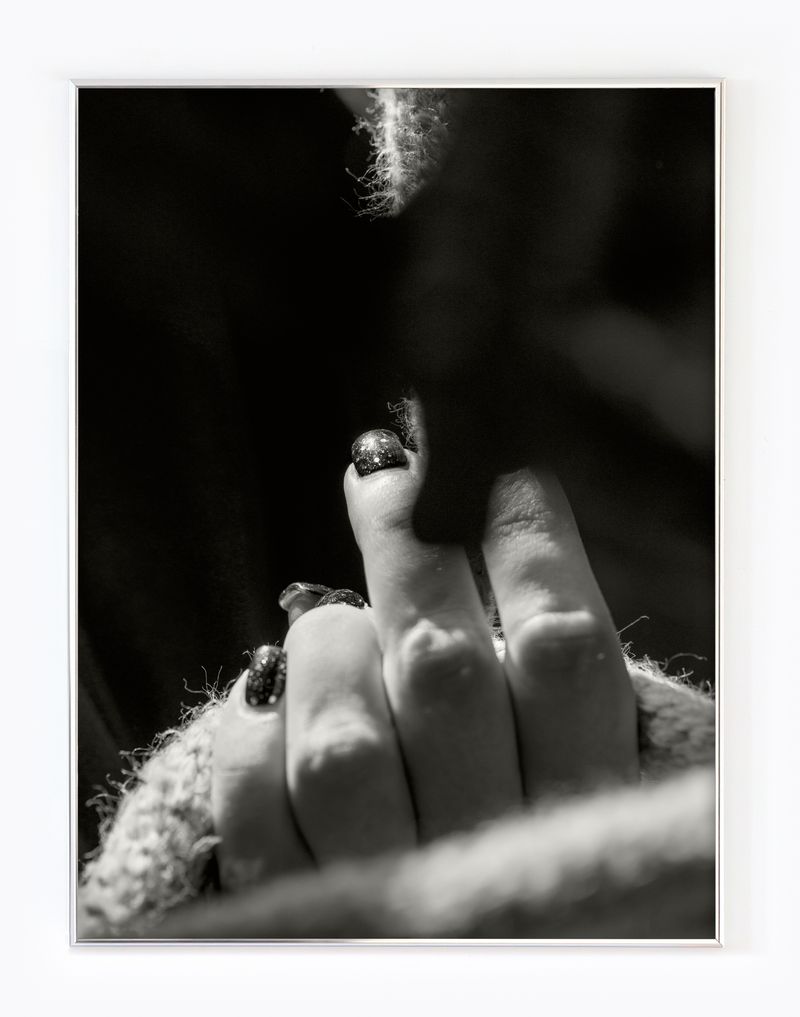Spark of a Nail
-
Dates2021 - Ongoing
-
Author
- Location United States, United States
A participatory photographic series with women and non-binary individuals working in the building trades "Spark of a Nail" explores the intersection of photography, labor, gender, and the built environment.
Spark of a Nail is a photographic collaboration with women and non-binary individuals working in the building trades, a historically male-dominated field. Together we craft images, recording a choreography of bodies that seek to describe something rarely seen: women and non-binary people shaping and transforming space of their own volition, interwoven with scenes of rest and care.
Spark of a Nail combines documentary, staged photography, and performance and is in conversation with two distinct visual histories: 20th century images of labor in the U.S.–which largely omitted minority groups and often served political goals–and feminist photographic practices from the 1970s and 80s including those by Meadow Muska, Betty Medsger and the various photographers included in "The Women’s Carpentry Book," which too has its own omissions.
I draw inspiration from 1970s sculptural work that subverted expectations about industrial materials as a means of political expression, such as Lynda Benglis’ “pours”, to create photographs that destabilize a ‘tough/soft’ binary, queering the act of building and what a non-cis-male body can do. I see a mirroring between how tradespeople mold raw materials into new forms, and how their presence in these spaces can reshape gender and social norms.
Photographing with tradespeople with varying skills my images come into being through creative re-performances of acts or gestures. Most often I
observe, sketch, and discuss with my collaborators before they re-perform their work with a photograph in mind. I photograph students in pre-apprenticeship programs which support learning for women and non-binary individuals specifically, helping them gain access to jobs in the trades. I seek out these learning environments as they provide the rare opportunity to photograph these individuals together as a group. I also work with tradespeople one-on-one in spaces where they have the opportunity to discuss and demonstrate their expertise. It is in these two types of settings I can observe a vulnerability and openness so rarely afforded in most spaces of construction. That said, when crafting these images men are often on the periphery. Deliberate framing choices enable me to build a world populated almost exclusively by women and non-binary individuals engaged in a collective and speculative building project.
While these jobs are safer today than when women first entered the trades they are still perceived as threats as they undermine the perception of this work as inherently masculine. As such, threats of sexual violence, racism and sexism persist. Recording women and non-binary people in these spaces therefore is not just work for the archive but a continued, relevant, and necessary gesture.
The initial catalyst for this work was a particular sense of personal urgency, a need to see a certain kind of picture. I was seeking a photographic scaffolding on which to climb out of the shadow of a harrowing political landscape. But it invariably broadened to larger questions and concerns about labor and bodies that are too frequently unseen, and photography’s role and complicity in that unseeing. Amidst this hostile political climate in the U.S. for women and the LGBTQ+ community my photographs–this choreography of bodies– acknowledge real world contingencies while imagining a future in which old structures are dismantled and new ones are collectively built in their place.
